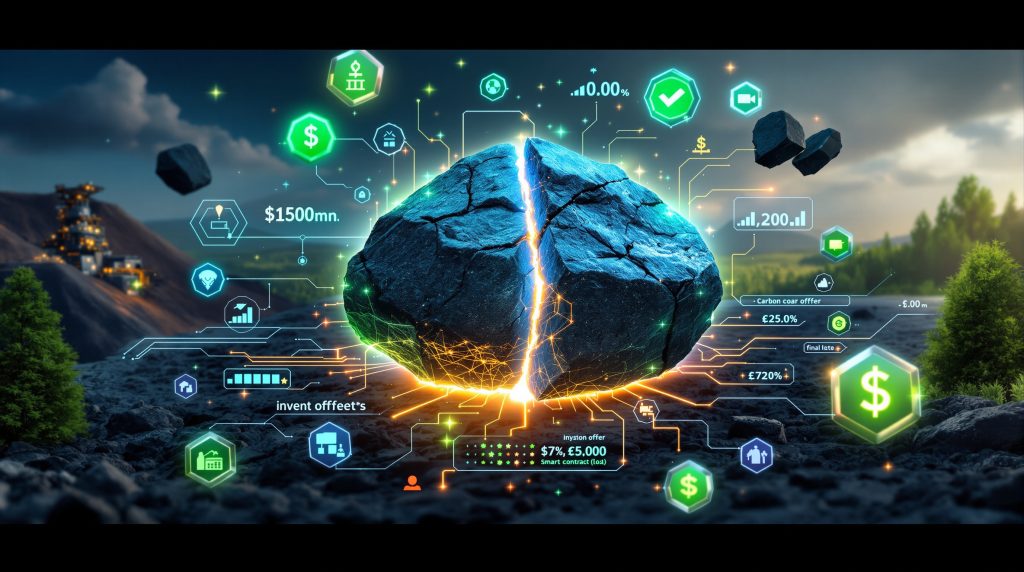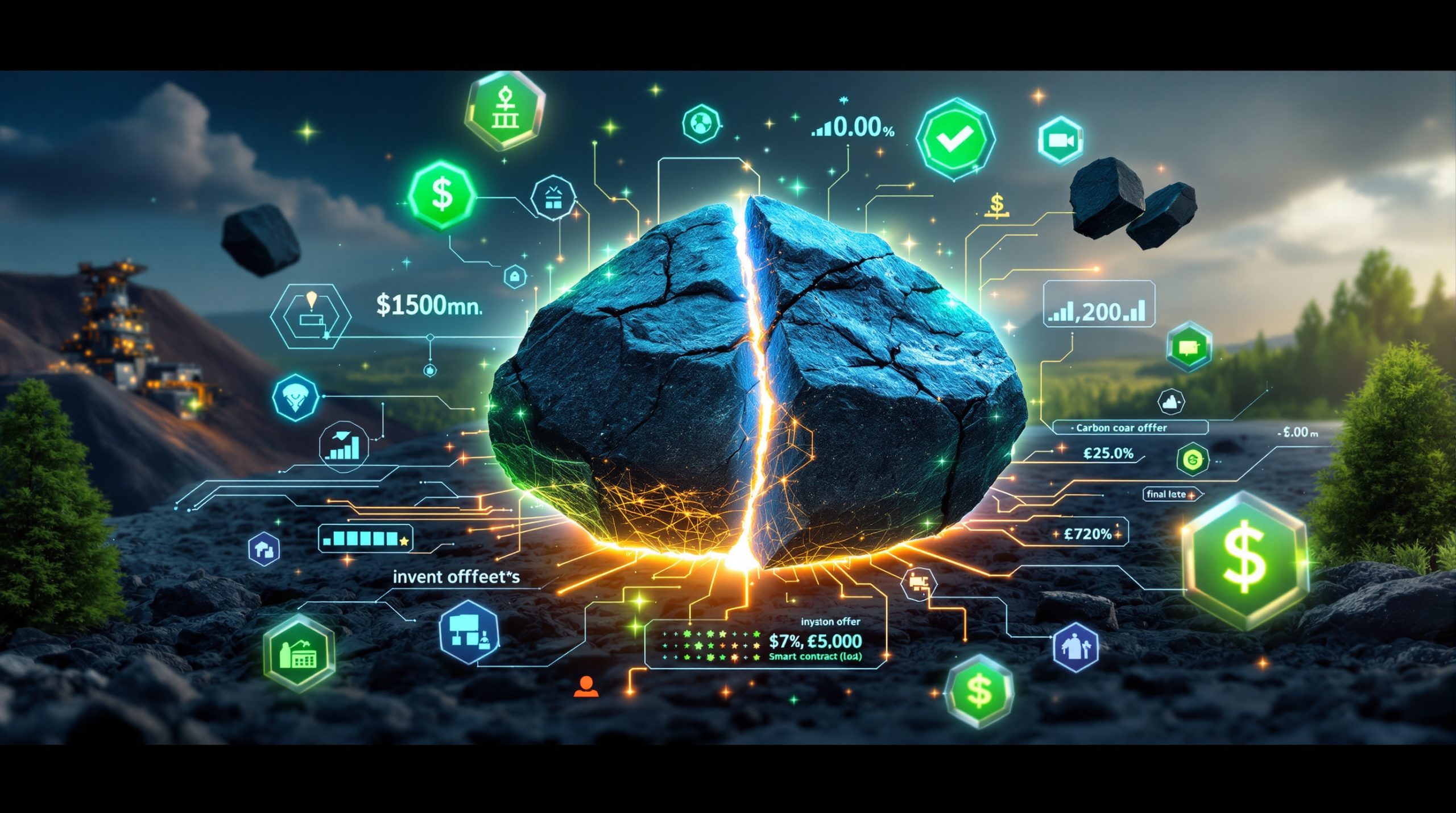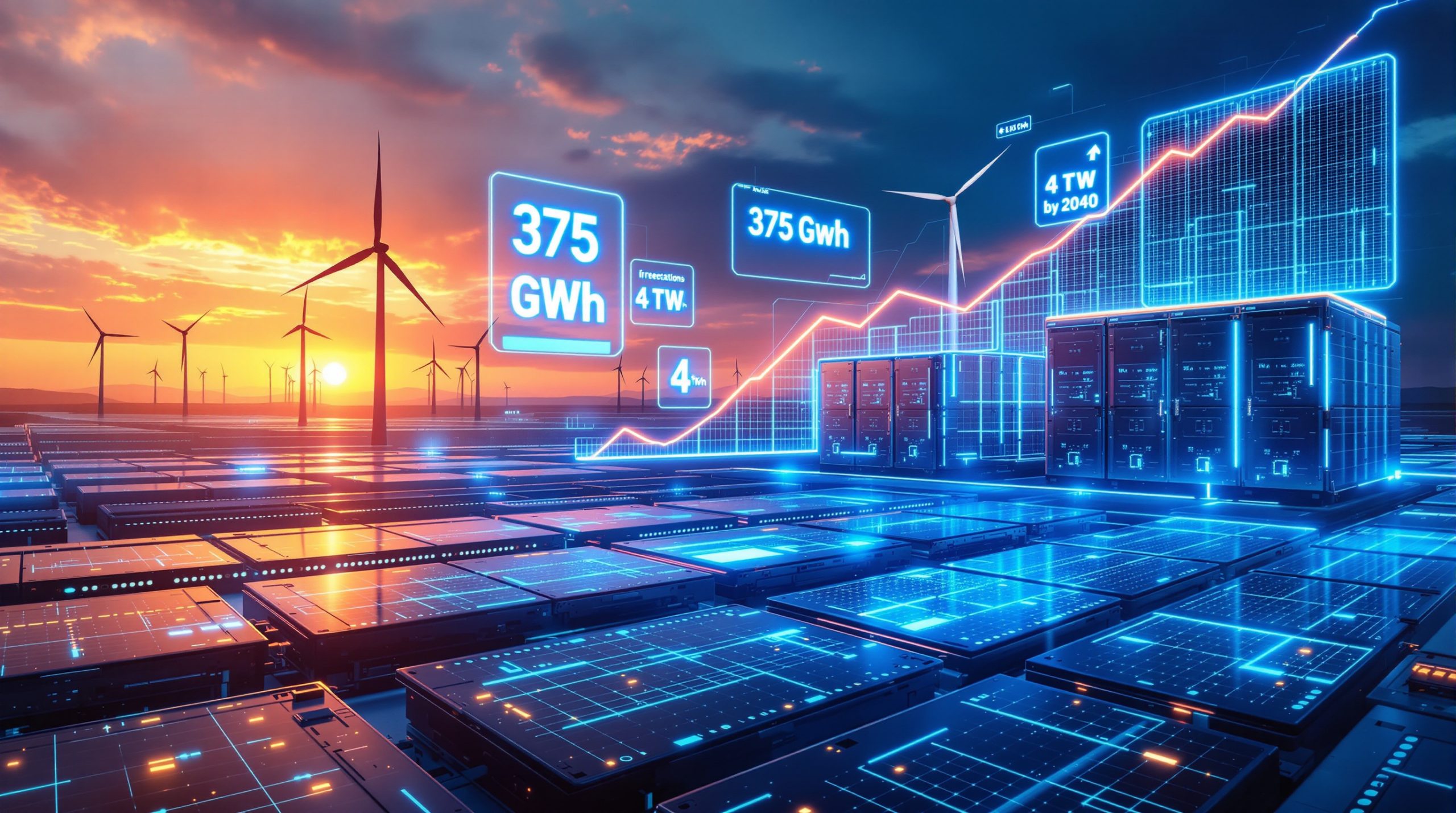What Is Fractional Ownership of Coal Through Blockchain?
Fractional ownership of coal through blockchain represents a revolutionary approach to natural resource investment, allowing investors to purchase digital tokens that represent partial ownership of coal reserves. This innovative model transforms traditionally inaccessible assets into divisible, tradable digital shares secured by blockchain technology.
How Blockchain Tokenization Works for Coal Assets
Digital Representation: Each token represents a specific quantity of coal reserves (typically measured in tonnes)
Smart Contract Foundation: Ownership rights, extraction conditions, and revenue distribution are encoded in programmable contracts
Immutable Ledger: All transactions and ownership changes are permanently recorded on a transparent blockchain
Fractional Accessibility: Investors can purchase small portions of coal assets without needing to acquire entire mines
The Dual Token Model Emerging in Coal Markets
| Token Type | Represents | Primary Purpose | Target Investors |
|---|---|---|---|
| Black Tokens | Physical coal for extraction | Resource ownership with delivery rights | Industrial users, commodity traders, energy companies |
| Green Tokens | Coal committed to remain unmined | Environmental commitments, carbon offsets | ESG-focused investors, corporations with sustainability goals |
Why Is Fractional Coal Ownership Gaining Traction?
The emergence of blockchain-based coal ownership reflects broader shifts in both investment opportunities and energy transition strategies. This approach addresses several key market needs simultaneously.
Democratizing Access to Natural Resource Investments
Traditional coal investment typically required massive capital outlays, restricting participation to large corporations and specialized mining companies. Blockchain fractional ownership has fundamentally altered this dynamic by:
-
Lowering minimum investment thresholds from millions to potentially hundreds of dollars
-
Enabling partial ownership without operational responsibilities
-
Creating liquidity in previously illiquid assets
-
Allowing portfolio diversification across multiple coal reserves
Addressing Capital Formation Challenges in Mining
The mining sector faces significant challenges in raising capital, particularly as ESG considerations increasingly influence investment decisions. Tokenization offers innovative solutions:
Expanded Investor Base: Attracting retail investors previously excluded from direct resource ownership
Flexible Funding Structures: Enabling project-specific investment rather than company-wide exposure
Staged Capital Deployment: Allowing incremental funding aligned with project development phases
Reduced Intermediation: Connecting investors directly with resource owners, potentially reducing costs
How Does Coal Tokenization Support Environmental Initiatives?
Perhaps counterintuitively, blockchain-based coal ownership has emerged as a mechanism for environmental protection and carbon reduction strategies.
The Green Token Approach to Carbon Management
Green tokens represent a commitment to leave specific coal reserves unmined, effectively sequestering the potential carbon emissions. This innovative approach:
-
Creates economic value from non-extraction of fossil fuels
-
Establishes verifiable, blockchain-secured commitments to keep coal in the ground
-
Develops long-term trusts (10-30 years) for maintaining these non-extraction commitments
-
Potentially integrates with carbon credit markets and corporate sustainability programs
Bridging Traditional Energy and Climate Goals
The dual token system creates a unique bridge between traditional energy markets and climate objectives:
Corporate Sustainability Integration: Enabling companies to directly invest in keeping fossil fuels unmined
Transparent Carbon Accounting: Providing verifiable records of carbon mitigation through non-extraction
Market-Based Conservation: Creating financial incentives for resource preservation rather than extraction
Transition Financing: Supporting gradual shifts from extraction to conservation models
What Are the Technical Foundations of Coal Tokenization?
The technical infrastructure supporting coal tokenization combines blockchain technology with traditional resource management systems.
Blockchain Architecture Supporting Coal Tokens
-
Distributed Ledger Technology: Maintains a permanent, tamper-resistant record of all token transactions
-
Smart Contract Functionality: Automates royalty distributions, extraction rights, and environmental commitments
-
Public/Private Key Cryptography: Secures ownership claims and transaction authenticity
-
Consensus Mechanisms: Validates transactions without requiring trusted intermediaries
Integration with Physical Asset Management
The connection between digital tokens and physical coal reserves requires robust systems:
-
Resource Verification: Independent geological assessments to validate underlying coal quantities and qualities
-
Legal Frameworks: Contractual structures ensuring token ownership translates to legal claims on physical assets
-
Custodial Solutions: Secure management of the legal title to coal reserves on behalf of token holders
-
Extraction Protocols: Standardized procedures for token redemption and physical coal delivery when applicable
What Are the Real-World Applications of Coal Tokenization?
Blockchain-based coal ownership is moving beyond theoretical models into practical implementation across several domains.
Investment Portfolio Diversification
For investors seeking exposure to natural resources:
-
Inflation Hedging: Coal assets potentially providing protection against currency devaluation
-
Commodity Exposure: Direct ownership of resources without operational mining risks
-
Alternative Asset Class: Diversification beyond traditional stocks and bonds
-
Fractional Positioning: Ability to take precisely sized positions based on portfolio strategy
Supply Chain Security for Industrial Users
For companies dependent on coal inputs:
-
Resource Security: Guaranteed access to specific coal reserves through token ownership
-
Price Stability: Potential protection against market volatility through direct ownership
-
Transparent Provenance: Complete visibility into the source and characteristics of coal supplies
-
Flexible Procurement: Ability to trade tokens based on changing resource needs
How Are Mining Companies Leveraging Tokenization?
Traditional mining operations are exploring tokenization as both a financing mechanism and operational tool as part of broader industry evolution trends.
Alternative Capital Formation Strategies
Mining companies face significant challenges in traditional capital markets, particularly for coal projects. Tokenization offers:
-
Project-Specific Funding: Raising capital for individual coal reserves rather than corporate-level financing
-
Phased Development Support: Enabling incremental funding aligned with project milestones
-
Pre-Sale Opportunities: Selling future production through tokens before development completion
-
Royalty Structuring: Creating programmable revenue-sharing arrangements through smart contracts
Operational Transformation Through Blockchain
Beyond financing, blockchain integration supports data-driven operations through:
-
Supply Chain Transparency: Tracking coal from mine to end-user with immutable records
-
Automated Royalty Payments: Instant distribution of proceeds based on pre-programmed smart contracts
-
Regulatory Compliance: Improved documentation for environmental and safety requirements
-
Stakeholder Engagement: Direct economic participation by local communities through token ownership
What Are the Potential Investment Considerations?
Investors considering coal tokenization should evaluate several key factors that differentiate this approach from traditional investments.
Risk Assessment Framework for Coal Tokens
| Risk Category | Black Tokens | Green Tokens |
|---|---|---|
| Market Risk | Exposure to coal price volatility | Less direct commodity price exposure |
| Regulatory Risk | Vulnerable to mining restrictions | Potentially beneficial from carbon regulations |
| Environmental Risk | Exposed to increasing carbon constraints | Aligned with climate initiatives |
| Technological Risk | Blockchain platform vulnerabilities | Blockchain platform vulnerabilities |
| Liquidity Risk | Dependent on token market development | Dependent on token market development |
Due Diligence Essentials for Token Evaluation
Prospective investors should consider:
-
Reserve Verification: Independent assessment of underlying coal quantity and quality
-
Legal Structure: Clarity on how token ownership translates to resource rights
-
Smart Contract Audit: Technical verification of the code governing token behavior
-
Regulatory Compliance: Adherence to securities laws and commodity regulations
-
Management Credentials: Experience of the team operating the tokenization platform
How Might Coal Tokenization Evolve?
The intersection of blockchain and natural resources is still developing, with several potential evolutionary paths ahead.
Integration with Carbon Markets
The green token model shows particular promise for integration with established carbon markets:
-
Standardized Carbon Accounting: Development of verified methodologies for calculating emissions avoided
-
Regulatory Recognition: Potential acceptance of non-extraction commitments as valid carbon offsets
-
Market Linkage: Integration with established carbon trading platforms and registries
-
Corporate Adoption: Increasing use by companies seeking verifiable carbon reduction strategies
Expansion to Other Fossil Fuel Resources
The tokenization model developed for coal could expand to:
-
Natural Gas Reserves: Similar dual-token approaches for gas fields
-
Oil Deposits: Fractional ownership of petroleum resources
-
Mineral Rights: Extending beyond fossil fuels to critical minerals and metals
-
Land Conservation: Applying similar models to preserve forests and other carbon sinks
What Real-World Examples Demonstrate Coal Tokenization?
Several pioneering initiatives illustrate how coal tokenization is moving from concept to implementation.
Case Study: MetWave Platform Launch
A significant development occurred in June 2025 when a Houston-based environmental technology company launched the first comprehensive blockchain platform for U.S. metallurgical coal reserves:
-
Dual Token Structure: Implementing both extraction-focused and conservation-focused tokens
-
Substantial Backing: Supported by over $4 billion worth of Alabama coal reserves
-
Smart Contract Implementation: Automated royalty distribution and extraction rights management
-
Multi-Sector Participation: Attracting investors from public markets, private equity, and manufacturing
Emerging Tokenization Projects Worldwide
Beyond this flagship example, several other initiatives are developing, including a focus on renewable energy transformation alongside traditional resources:
-
Australian Resource Tokens: Fractional ownership of Queensland coal reserves
-
Indonesian Mining Digitization: Blockchain integration with existing coal operations
-
Canadian Conservation Initiatives: Green token projects focused on keeping coal reserves unmined
-
European Trading Platforms: Secondary markets developing for coal-backed tokens
How Does Coal Tokenization Compare to Other Investment Models?
To understand the unique position of coal tokenization, it's helpful to compare it with alternative investment approaches.
Comparative Analysis with Traditional Resource Investments
| Investment Type | Minimum Investment | Liquidity | Direct Ownership | Environmental Integration |
|---|---|---|---|---|
| Coal Mining Stocks | Low (share price) | High | Indirect | Limited |
| Coal Futures/Options | Medium (contract size) | High | No (derivative) | No |
| Direct Mine Ownership | Very High (millions) | Very Low | Yes | Optional |
| Coal Tokenization | Low (token price) | Medium | Fractional | Yes (via Green Tokens) |
Parallels with Other Tokenized Real Assets
Coal tokenization shares characteristics with other blockchain-based real asset investments as outlined in research on fractionalized ownership:
-
Real Estate Tokenization: Similar fractional ownership models applied to property
-
Precious Metals Tokens: Digital representations of gold, silver, and platinum
-
Art and Collectible NFTs: Ownership division of unique assets
-
Agricultural Land Tokens: Fractional farmland investment platforms
What Legal and Regulatory Considerations Apply?
The regulatory landscape for tokenized coal ownership continues to evolve, with several key considerations for participants.
Securities Regulation Implications
Depending on structure and jurisdiction, coal tokens may be classified as:
-
Investment Contracts: Subject to securities laws if meeting certain criteria
-
Commodity Interests: Potentially regulated as derivatives in some contexts
-
Digital Assets: Subject to emerging crypto-specific regulations
-
Resource Rights: Governed by mining and natural resource laws
Environmental Compliance Frameworks
Green tokens in particular intersect with environmental regulations, with blockchain demonstrating significant carbon reduction potential:
-
Carbon Accounting Standards: Methods for verifying emissions avoided through non-extraction
-
Conservation Commitments: Legal enforceability of promises to keep coal unmined
-
ESG Reporting Requirements: Integration with corporate sustainability disclosures
-
International Climate Agreements: Potential recognition under carbon reduction frameworks
FAQ: Understanding Coal Tokenization
How do investors actually redeem black tokens for physical coal?
Black tokens typically include redemption mechanisms allowing token holders to claim physical coal delivery when desired. This process usually involves:
-
Notifying the platform of redemption intent
-
Specifying delivery requirements and timing
-
Surrendering the tokens through a smart contract
-
Receiving physical coal according to the token's specifications
Not all investors choose to redeem tokens, as many participate purely for investment purposes rather than coal utilization.
What prevents companies from mining coal that's been tokenized as "green"?
Green tokens are secured through multiple protective mechanisms:
-
Legal Encumbrances: Formal restrictions placed on the mining rights
-
Trust Structures: Coal reserves held in conservation trusts with independent trustees
-
Smart Contract Controls: Blockchain-enforced restrictions on extraction rights
-
Financial Penalties: Significant economic consequences for violating non-extraction commitments
-
Continuous Monitoring: Regular verification of the unmined status of the reserves
How does tokenization affect local communities near coal reserves?
The impact varies based on implementation, but potential effects include:
-
Economic Participation: Opportunity for community members to own tokens in local resources
-
Employment Shifts: Potential reduction in mining jobs offset by conservation and monitoring roles
-
Revenue Stability: More predictable community benefits through programmed smart contracts
-
Environmental Benefits: Reduced local pollution when green tokens prevent extraction
-
Stakeholder Voice: Possible governance rights for community token holders
Can coal tokens be traded on major cryptocurrency exchanges?
The trading landscape for coal tokens continues to evolve:
-
Specialized Platforms: Most trading currently occurs on resource-focused exchanges
-
Regulatory Hurdles: Major exchanges typically require clear regulatory classification
-
Liquidity Development: Secondary markets are still maturing for these specialized tokens
-
Institutional Interest: Growing participation from commodity trading firms and energy companies
Further Exploration:
Readers interested in learning more about blockchain applications in natural resource markets can also explore related educational content about tokenization of physical assets and the intersection of blockchain with environmental initiatives.
Ready to Spot the Next Major ASX Mineral Discovery?
Stay ahead of the market with Discovery Alert's proprietary Discovery IQ model, which instantly identifies significant mineral discoveries as they are announced on the ASX. Visit our discoveries page to see historical examples of exceptional returns generated by major mineral finds and begin your 30-day free trial today.




